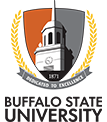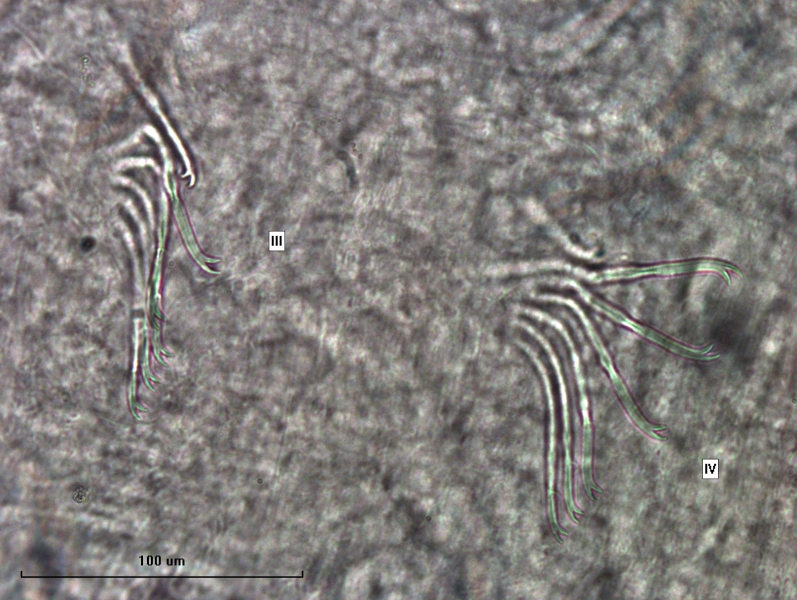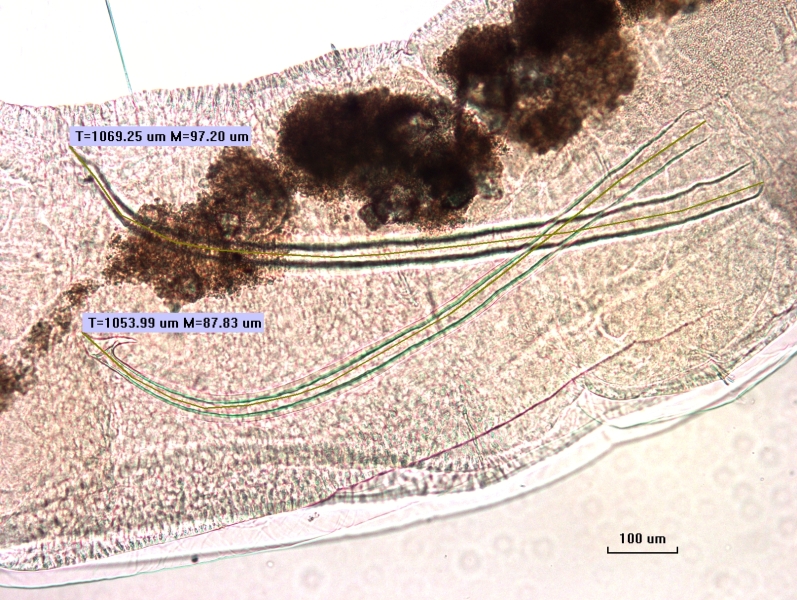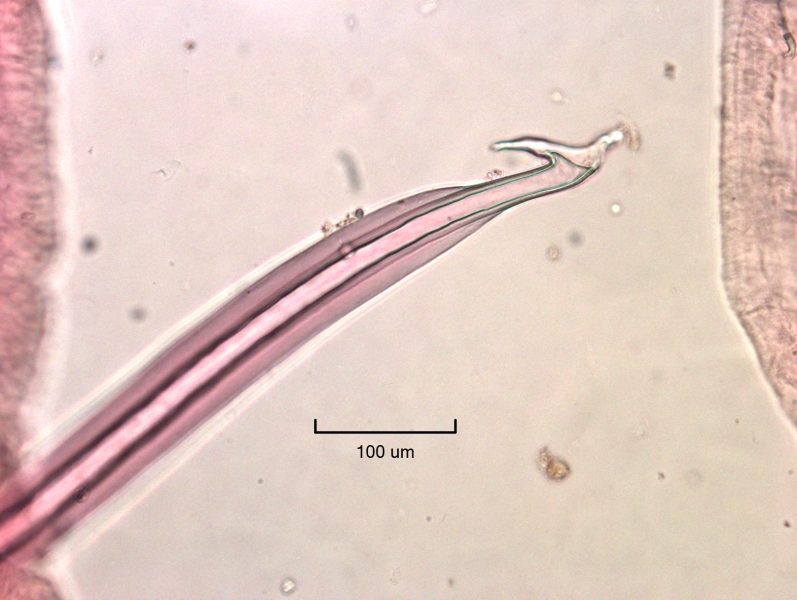Limnodrilus cervix
Taxa description
Limnodrilus cervix Brinkhurst, 1963 is a freshwater oligochaete worm that is common in the Great Lakes. It is a tubificid worm with bifid dorsal and ventral chaetae beginning in II and long cuticular penis sheaths in XI when mature. The anterior bundles have 4–9 (rarely up to 10) chaetae, with fewer in posterior bundles. It is common for Limnodrilus spp. to have variation in the chaetae, but the upper teeth of L. cervix are a little longer and thinner than the lower. The penis sheaths are generally >1000 μm but less than 1500 μm and have very thick walls that usually appear to have two layers that narrow abruptly right below the head. The head plate is small with a triangular apex that is sometimes bent over the orifice but not curved to the side, and there is usually a digitate lobe on the lower portion. There is some variation in the head, and sometimes a worm bearing thick walls but a triangular head without a digitate lower lobe is viewed as either a variant form or L. cervix/L. claparedeianus hybrid. There are also variants in more enriched sites with thinner walls that may belong to L. claparedeianus or the hybrid. There is evidence that L. cervix/claparedeianus is genetically distinct enough from L. cervix to be its own species (Liu et al. 2017).
Distinguishing features
L. cervix is mainly identified by long penis sheaths, without which it will just appear as an immature tubificid worm without hairs. The penis sheaths are >1000 μm long with two-layered, thick walls, and a small head plate with triangular lobes at the top and bottom. The chaetae are all bifid with the upper tooth a little longer and thinner than the lower, and no hair chaetae.
Habitat
L. cervix can be found in soft substrates, especially in environments that are organically enriched, but not as tolerant to organic pollution as L. hoffmeisteri and L. cervix/claparedeianus. It may be sympatric with L. cervix/claparedeianus but is also found separately.
Lake occurrence
Lakes Erie and Huron.
Similar species
Without the presence of reproductive features, many tubificid worm species can only be identified as “immature tubificid with or without hair.” The length of the penis sheaths separates L. cervix from most of the other Limnodrilus species, but it still could be confused with L. claparedeianus, L. cervix/claparedeianus hybrid, and L. maumeensis. L. claparedeianus may have penis sheaths as long as or longer than L. cervix, but the head of L. claparedeianus is usually a small, symmetrical triangle at a slight angle to the shaft, with no digitate lower lobe, and the shaft is thin with only one layer. There are some specimens that appear to be a cross between L. cervix and L. claparedeianus, often denoted as L. cervix/claparedeianus. These specimens share features of both species, with a smaller, triangular head plate and thickened walls, or a larger head with a lower digitate lobe and thinner, almost one-layered walls. L. cervix is also similar to L. maumeensis because L. maumeensis has thick walls, although they are usually just one-layered, and one side may be thicker than the other because there is often a curve, slight or pronounced, in the shaft near the head plate. There is a slight narrowing in the shaft below the head plate, but not as pronounced as in L. cervix. L. maumeensis has a wide, triangular head with a curved upper tip, and no lower digitate lobe. Finally, there is a chance that the penis sheaths may be shorter than 1000 μm because they aren’t fully developed and thus be closer to the size range of L. hoffmeisteri. Even if the penis sheaths are underdeveloped, however, they should still have a double-walled shaft and a head that may have a digitate lower lobe that help with the correct identification.
Another species with long penis sheaths and bifid chaetae is Varichaetadrilus angustipenis. The length is not noted in the keys, but it has long penis sheaths with small head plates usually perpendicular to the shaft, with the basal portion conical instead of cylindrical and sometimes crumpled. The other identifying factor is having chaetae in II with the upper tooth distinctly shorter and thinner than the lower. L. cervix has the double-walled shaft with the head with a digitate lobe, but all of the bifid chaetae usually have the upper tooth a little longer and thinner than the lower, not distinctly shorter.
Relative size
L. cervix is a relatively large freshwater oligochaete.
Does it have a barcode reference from the Great Lakes?
Yes, this species does have a barcode reference from the Great Lakes.
References
Liu, Y., S.V. Fend, S. Martinsson, and C. Erséus. 2017. “Extensive cryptic diversity in the cosmopolitan sludge worm Limnodrilus hoffmeisteri (Clitellata, Naididae).” Organisms, Diversity, & Evolution 17:477–495.
Kathman, R.D., and R.O. Brinkhurst. 1998. Guide to Freshwater Oligochaetes of North America. pp. 160–161, 134, 154-162, 172–173.
Stimpson, K.S., D.J. Klemm, and J.K. Hiltunen. 1982. A Guide to the Freshwater Tubificidae (Annelida: Clitellata: Oligochaeta) of North America. pp. 36–39, 46.





